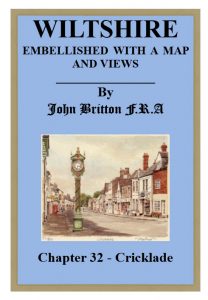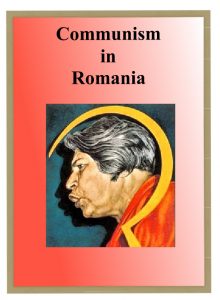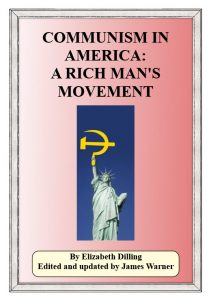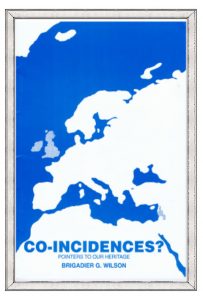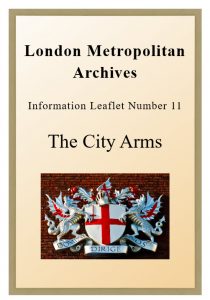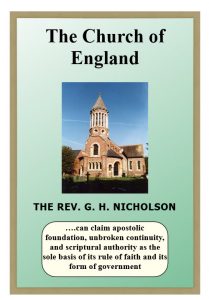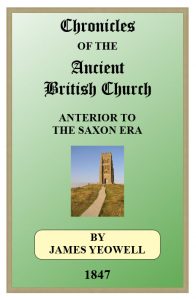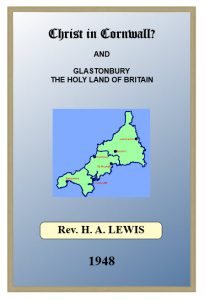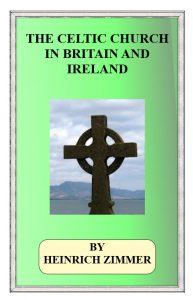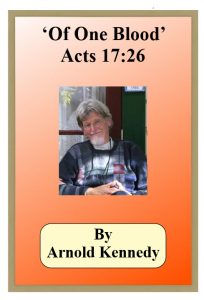CRICKLADE IS A BOROUGH town situated in a flat tract of country on the southern bank of the river Isis, or Thames, which has its source not far from the town. Concerning the origin of this place much diversity of opinion has prevailed among antiquaries and historians. William of Worcester relates that it was formerly called Chelysworth, and constituted part of an ancient parish of that name, extending six miles in circumference .1 In a tract intituled Historiola Oxoniensis, it is affirmed that a University was established here by the Britons, over which several Greek philosophers presided; and that this seminary was afterwards translated to Oxford by the Saxons. The authenticity of this account, however, though confirmed; is some writers think by the etymology of the term Cricklade, they conceive to be a corruption for Greeklade, is regarded by Camden, Stukeley, and others, as a monkish fable, and altogether undeserving of credit; In this opinion we fully coincide, but we are nevertheless satisfied that Cricklade is a town of great antiquity. Stukeley supposed it probable, that it was originally a Roman station, as the road which connected Corinium (Cirencester) with Spinae (Spene), runs through it. In the Magna Britannia it is stated on the authority of the Red Book in the Exchequer, that there formerly belonged to it 1300 hides of land, but the period to which the record refers is, not mentioned. This great extent of land most likely comprehended the whole hundred, which was entirely possessed, along with the manor by Edmund de Langley, Earl of Cambridge, and Duke of York. About the year 905, Ethelwald nephew and brother to King Edward the elder, pretending to dispute with that monarch his title to the throne, collected a large body of troops, chiefly East Angles, and advanced as far as Cricklade on a predatory excursion. Edward immediately marched to attack him but the prince withdrew with his spoil, before the royal forces could come up. From a MS in the Bodleian Library, it appears that Canute the Dane, also plundered this town in the year 1016.
Download Tag: Scripture
Communism in Romania
JEWS were the original revolutionaries who headed the Communist movements in every single country in East Europe when they originally seized power. While often playing a “behind the scenes role” in the initial stages, Jews later became the open leaders of Communism.
After the First World War; Romania had a Jewish population of 850,000. or 5% of the population. They dominated law, commerce, banking and trade. At the same: time they founded the Romanian Communist Party which was headed by the Jews, Dr. Ghelerter, Spieegler, Schrieber and Anna Pauker.
Jewess Anna Pauker was the main Red leader in Romania before and after World War II. She was named dictator by Stalin in 1946. Anna Pauker’s real name Rabinsohn, was born into an Orthodox Jewish family. In 1910, at age 17, she was recruited into Marxism by her lover Herschel Steinberg. Later she would marry the Jew Marcel Pauker. They would become co-leaders of the ;Romanian Communist Party in 1928. In 1933, they tried to overthrow the government by taking .control of a railway strike which ended with a bloody attempt to seize Bucharest.
Communism in America – A Rich Man’s Movement
Due to her affluent relatives money was not a problem for because of the wealth she inherited from her mother and aunts. Albert was also the chief engineer of the Chicago Sewage District. Her marriage to Albert produced a son, Kirkpatrick (1920-2003) who was a famous Chicago lawyer and a daughter, Elizabeth Jane who was also a lawyer.
In the 1920’s she joined the Chicago based Reveres until she had a falling out with the leader of the Reveres, a retired Army Lt. Col. Edwin Marshall Hadley.
Lt. Col. Edwin Marshall Hadley had organized a number of chapters of his anti-Jewish organization The Paul Reveres in the Chicago area and he wrote three books on the Jewish origins of Bolshevism.
Dining attended several of his meetings but disagreed with him on the issue of the Jews. At that time she believed that Communism was not Jewish even if the majority of leaders of the Communist Movement in America were racial Jews.
Later the Dilling family travelled widely, and visited the Soviet Union. They spent a month there, and she filmed what some of the atrocious conditions and anti-Christian activities of the Jews in that country. Especially alarming to Dilling was their Soviet guide’s proclaiming, “Our world revolution will start with China and end with the United States!
When she returned home to Illinois, she went on a tour showing her movies and telling those attending her lectures that the Soviet “workers’ paradise” was anything but a “paradise”.
Co-incidences
What is a “Co-incidence”? How many ‘co-incidences’ have to occur before you can cease to write them off as such, and begin to realise that each of these so-called co-incidences is adding its weight to support a particular premise? We believe that the Anglo-Celtic-Saxon Peoples, and Britain in particular, are the literal present day descendants of God’s Servant Nation Israel. We base this belief on the Word and Authority of Almighty God, given to us in the Bible. We believe that under Divine guidance our forefathers migrated— over a long period — from the Bible area of the Middle East to a place appointed for them by God in fulfilment of His Covenant with David: (H SAM.7:1 0) i.e. the British Isles and the North Sea fringe. We also believe that God has faithfully kept His solemn promise that David’s throne (which IS the Throne of the Lord*) and his royal line should ‘endure forever’ and would have a descendant of David’s line reigning on that Throne from generation to generation — holding that very Throne in trust until He comes whose right it is — Our Lord Jesus Christ, to take it for Himself and rule in glory, as promised in Luke I v32. We know that blindness in part was to come upon Israel, as part of their punishment, and that God’s servant nation was destined to be totally ignorant of their origins, their name and their real identity: and this is so— absolutely today!
Nevertheless, if we look around us, we may perceive a considerable number of instances and indications in our national and religious life, in our history, our ceremonial, our national languages and especially in everything that concerns our Royal Throne; ALL linking our indigenous British People with their Biblical Israelite origins. Some of these items are listed here at random. Separately they may appear to be mere co-incidences and of little significance — but TOGETHER their combined weight MUST be considerable, and they all point in the same direction, confirming our belief.
The City Coat Arms
Information about the arms of the City of London from the earliest times to the present day is given below.
The earliest specific mention of the armorial bearings of the City of London appears on 17 April 1381, when it was ordered that the old mayoralty seal should be broken as it was “ill-befitting the honour of the City”. St Thomas Becket and St Paul featured in the design of the old seal and they were also incorporated in the new one. A contemporary description records that it was commissioned by the Mayor, William Walworth, and depicted “beneath the feet of the said figures a shield of the arms of the said City … with two lions guarding the same”. The shield contains a cross charged with a dagger or sword in its first quarter and is similar to the modern design.
This evidence means that the popular belief that the dagger or sword represents the weapon with which Walworth killed the rebel, Wat Tyler, during the Peasants’ Revolt cannot be true. The seal was designed and executed several months before Tyler’s death in June 1381 and the sword almost certainly represents the sword of St Paul.
The Church of England
….can claim apostolic foundation, unbroken continuity, and scriptural authority as the sole basis of its rule of faith and its form of government
The Rev. G. H. Nicholson, Burghfield rectory, Nr. Reading, Berks, England
(The Burghfield Parish Church is on the cover of this publication)
Some Glimpses of its Earliest History may be gathered from. the words of the following GREAT AUTHORITIES IN BYGONE CENTURIES.
Tertullian. A.D. 155-222. The Church’s first great genius after the Apostles wrote “The extremities of Spain, the various parts of Gaul, the regions of Britain which have never been penetrated by Roman arms have received the religion of Christ.” (Tertullian Def. Fidel, p. 179).
Eusebius. A.D. 260-340. The Church’s first great historian, wrote: “The Apostles passed beyond the ocean to the isles called the Britannic Isles.” (De Demonstratione Evangelii, Lib. Ill).
St. Dorotheus. Bishop of Tyre. A.D. 303 said: “Aristobulus, whom Paul saluted writing to the Romans (Romans ch 16. v. 10) was Bishop of Britain” (Synopsis de Apostol. Synops 23 “Aristobulus”). He also mentions by name another Disciple as visiting Britain. Simon Zelotes preached Christ through all Mauretania, and Afric the less. At length he was crucified at Brittania, slain and buried.” (Synopsis de Apostol. Synops. 9. “Simon Zelotes.”)
Chronicles of The Ancient British Church Anterior to The Saxon Era
THE substance of the following work was originally published as miscellaneous papers in a monthly periodical during the year 1839, and collected at the close of the series as a separate tractate. The present republication has been suggested by the favourable reception and speedy sale of the first rough sketch already presented to the public. During those intervals of time when the writer has found himself released from other engagements, he has endeavoured, to the best of his ability, to gather up the precious fragments which remain in the works of historians of acknowledged authority respecting the primitive Church of Britain, that no part of so valuable a treasure might be lost. If nothing more has been effected than merely collecting and arranging the materials of our early Church history, and placing them in a light best calculated to convey instruction, it will be a satisfaction to have exerted even the feeblest effort.
The particular period of history discussed in the following pages is one of considerable interest to the ecclesiastical student, embracing as it does an account of the rise and progress of the infant Church of our country, and the triumphs of the faith over druidical mythology and Roman paganism. From the title of his work, it will be perceived that the writer has confined himself almost entirely to the Church history of this early period, and has only indirectly referred to its civil and political, with a view to illustrate its ecclesiastical affairs. Of the invasion of Britain under Julius Caesar, and again under Claudius—its struggles for liberty under Caractacus, Boadicea, and others— the rise of the British tyrants—the desertion of the island by the Romans—the irruption of the Picts and Scots—and the establishment of the Angles, Jutes, and Saxons, much has already appeared in the volumes of those who have written expressly on the civil and military transactions of Britain.
The origin and true nature of our social and political institutions must ever form a subject of peculiar interest for the study and reflection of every Englishman; but to the Christian who believes that the Church is the divinely appointed channel for conveying the precious gifts promised by God to his people, its introduction into his native land must be a matter of no common importance. He looks back on its earliest dawn with pleasing retrospection, watches its progress with intense solicitude, and at every step feels a personal interest in all the vicissitudes of its eventful history.
Christ in Cornwall? and Glastonbury The Holy Land of Britain
A TALENTED AUTHORESS HAS LATELY PUBLISHED A BOOKLET, in which she sets out to disprove most of the holy legends of Glastonbury and Cornwall, and in particular that of the visit of Our Lord to this land. She has entitled it “Glastonbury, Truth and Fiction.” The title alone shows the prejudiced attitude of the writer and her fellow sceptics. Since when has legend or oral tradition become identified with fiction? Or truth confined to facts attested by documents of unimpeachable reliability? The utmost that the writer has proved is that many of these holy legends have not the documentary support which she and her kind require in order that they should be classified as “truth,” or at any rate be removed from the realm of “fiction.” I wonder in which category the writer would place the following, to mention only three generally accepted traditions:
The martyrdom of most of the Apostles. The episcopacy of St. Peter at Rome. The residence of St. John at Ephesus.
If documentary proof is the only requisite of truth, and all legend is fiction, then surely these, too are fiction.
The view taken by the present writer has always been that legends often, perhaps generally, contain a germ of truth, and that the probable degree of truth can be fairly gauged by such considerations as the source of origin; the localities where the legends had vogue; the likelihood or otherwise of the influence of careless legend-mongers; and finally the result of applying to the legends the acid test of history and archaeology.
I claim that the legendary visit of Our Lord to Britain, and to Cornwall in particular, comes through all these tests remarkably unscathed, leaving all reasonable people with the conviction that it may have been, and many of us who have given years of study to the subject, the growing faith that it is probably true.
I shall presently record the various versions of the legend, mostly in the very words in which they were given me by my informants, the majority of whom are simple folk with no pretension to much “book learning.” It will be seen at once that it is almost exclusively associated in Cornwall with the tin trade, in the mining districts and the adjacent ports from which British tin was exported before and during the first century A.D. It is not usually found in parts where monastic influence was most pronounced. Even at Glastonbury the legend perpetuated and embellished by the monks of the middle ages was about Joseph of Arimathea, rather than about Our Lord, as the holy visitor.
The Celtic Church in Britain and Ireland
IT MAY SAFELY BE CONCLUDED from the silence of Gildas that the British Church of the first half of the sixth century possessed no knowledge or tradition respecting the introduction of Christianity. into Britain. An apostle to the Saxons had arisen in Augustine of Canterbury (A.D. 597), and the feud between the Celtic Church of Britain and the newly founded Anglo-Roman Church had lasted for a century before we meet with the Lucius fable in Bede. To quote his own words : ” In the year of our Lord’s incarnation 156, Marcus Antoninus Verus, the four-teenth from Augustus, was made emperor together with his brother Aurelius Commodus. In their time, whilst Eleutherus, a holy man, presided over the Roman Church, Lucius, king of the Britons, sent a letter to him, entreating that by his command he might be made a Christian. He soon obtained his pious request, and the Britons preserved the faith which they had received, uncorrupted and entire, in peace and tranquillity until the time of the Emperor Diocletian.”[1Lucius, king of the Britons, sent a letter to him, entreating that by his command he might be made a Christian. He soon obtained his pious request, and the Britons preserved the faith which they had received, uncorrupted and entire, in peace and tranquillity until the time of the Emperor Diocletian.”
‘Of One Blood’ – Acts 17:26
Acts, 17:26 is a verse which some people like to use to support the idea that there is no difference between races. KJV: “And hath made of one blood al nations of men to dwell on al the face of the earth, and hath determined the times before appointed, and the bounds of their habitation.
Three immediate points need to be made:—
ONE In the majority of Bible manuscript texts, the word “blood” is not there. A look at most parallel Bibles, will give some confirmation of this.
TWO. his verse is an excellent demonstration of how people can try to use one part of a verse to prove their point, but at the same time ignore the rest of the verse which flatly contradicts what they are trying to say. The second part of the verse is stating that God made “boundaries” where differing peoples/races were ordained of God to live separated from one another. People cannot have it both ways.
THREE: The strange and very unusual thing about this verse is that it contains four words in Greek forms [not English words] that do not appear elsewhere in the New Testament, and this gives rise to doubts about the whole verse. Some say that the verse does not seem to be original because of this these words are:–
